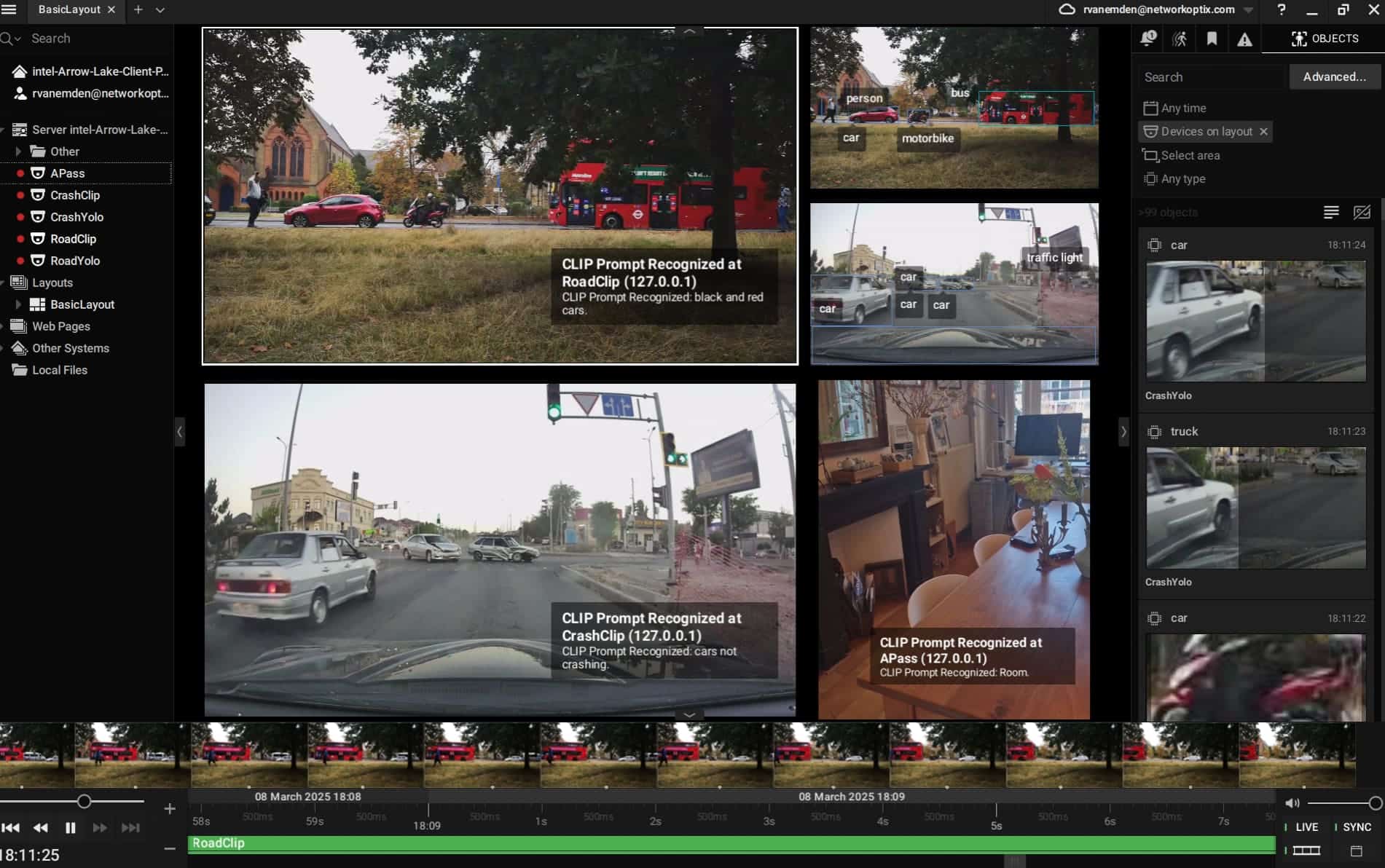The new generation of Intel Core Ultra processors enables real-time processing of millions of data points captured by IP cameras, with applications that go far beyond security.
From aerospace factories to shopping malls, universities, law enforcement agencies, and automobile manufacturers: they all share an increasingly critical common need in the digital age — intelligent video management at scale. In response to this growing demand, Network Optix, in collaboration with Intel, has introduced an innovative AI-driven solution that redefines how organizations process and utilize video data.
The presentation took place during Intel Vision 2025, where a natural language-driven prototype was showcased, designed to optimize the efficiency of video platforms. This development leverages the Intel® Core™ Ultra 200H processors, known as Arrow Lake H, which integrate CPU, GPU, and NPU to accelerate AI tasks directly at the Edge, meaning in local devices or on-premises servers.
AI for Much More Than Surveillance
Traditionally, IP cameras have been mainly used for security purposes. However, thanks to advancements in computer vision and AI, they now allow for much more, including production line monitoring, automatic product counting, defect detection, and verification of employee usage of protective equipment, among other applications.
“Previously, reviewing video data accumulated over months could take hours. Now, searching through an entire year’s worth of recordings can be done in seconds,” says James Cox, Vice President of Business Development at Network Optix. “This was a real problem for our clients, especially in global industrial environments.”

The system allows for quick filtering of specific events, such as fights or traffic accidents, thanks to the use of dropdown menus accessible even to users without advanced technical training. From a receptionist to a security guard, anyone can operate the platform with ease.
Edge Processing: The Key to Efficiency
While Network Optix software can operate in the cloud, the real advantages are achieved by processing data locally. This avoids the enormous costs and bandwidth consumption that would arise from sending raw data to remote centers. As Cox notes, “a single camera can generate up to 5 MB per second. If you have 100 cameras, that’s 500 MB/s. At sites with thousands of cameras, sending that amount of data to the cloud is not viable.”
With AI operating directly at the Edge, the system transforms video streams into structured data in real-time, drastically reducing latency and improving data security and privacy. All of this is made possible by the performance of the Intel Core Ultra 200H processors, specifically optimized for environments with space, power, and budget constraints.
Critical Applications: From Space Launches to University Campuses
Among Network Optix’s most demanding clients are companies in the aerospace sector, where the number of cameras deployed to monitor a launch can be overwhelming. Engineers need accurate, instant, and continuous information from every angle of the rocket.
But the technology is also present in university campuses, municipal infrastructures, and transportation networks, where it is used to detect incidents, analyze human behavior, and anticipate problems before they escalate.
Advanced AI Without Facial Recognition
A standout feature of the system is its integration with CLIP, the OpenAI neural network that allows for image recognition and association with text descriptions. This facilitates the identification of objects, colors, or behaviors, but without performing facial recognition — an important distinction regarding privacy. The AI can detect the presence of a human face but cannot identify the person.
A Qualitative Leap in Video Management
With over 4.5 million connected cameras worldwide on its platform, Network Optix demonstrates that video management is no longer just a matter of storing and reviewing images, but a strategic tool to enhance processes, reduce risks, and increase operational efficiency across multiple sectors.
Thanks to local processing powered by Intel, artificial intelligence becomes a real-time ally. A silent revolution that, from a server beside the control room, transforms images into useful knowledge.

